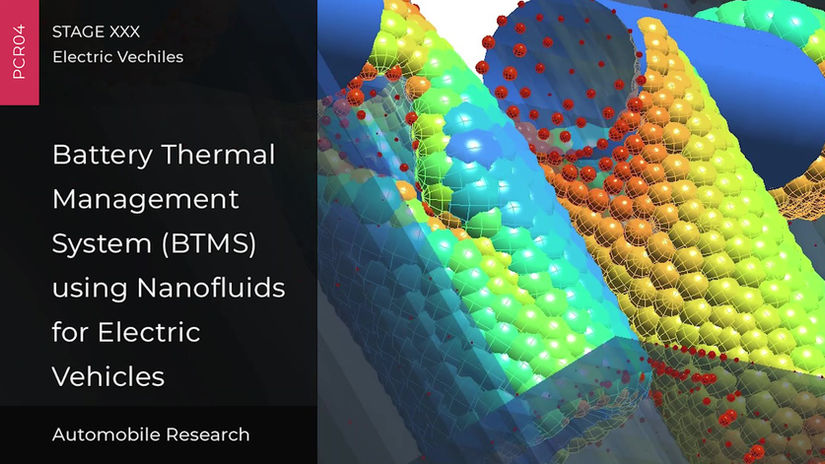Electric Vehicles Research
Synopsis of research from August 2022 to present
Research Title : Battery Thermal Management System (BTMS) using Nanofluids for Electric Vehicles
Our team has conducted extensive studies to understand how nanofluids perform under varying temperature ranges and what factors affect their stability and efficiency.
Our research suggests that the behavior of all nanofluids is unique, complex, and showcase different heat gain and heat rejection for different Battery Surface Temperature (B.S.T.). We have observed that nanofluid thermal behavior is not only dependent on the Battery Surface Temperature (B.S.T.) but also on Cooler Surface Temperature (C.S.T.). Therefore, different nanofluids may need to be selected for different working temperature ranges.
Our findings show that the performance stability of nanofluids containing Au, CuO, and Al2O3 nanoparticles separately as an individual nanofluid is higher at 30°C, with cooling ranges from 0.2°C to 1°C. Similarly, the performance stability of nanofluids containing Ag and Al2O3 nanoparticles separately as an individual nanofluid is higher at 35°C, with cooling ranges from 0.1°C to 0.5°C.
We have also compared the performance of plain fluid and nanofluid with Al2O3 as the nanoparticle and found that the nanoparticle present in the fluid increases and maintains the performance stability while operating at a higher temperature range. However, the degree of performance change for different nanofluids with respect to plain fluid is still being studied and the result will be available in the coming months.
Our research also suggests that the performance of nanofluids is not only dependent on the major temperature observed on the thermal network but also on the minor average and minimum temperatures observed. We have observed that the sudden drop or change in temperature in-between the thermal network system can also hamper the performance of the nanofluid in a drastic way.
We have tested various nanofluids, including Water+Ag and Water+Cu, and observed their good heat rejecting capacity when thermal network systems undergo sudden temperature changes. However, we have also noticed a decrease in maximum cooling performance and maximum heat rejection with an increase in B.S.T.
Our team has also found that the minimum heating and minimum cooling performance of all nanofluids remained almost linear for 30°C Battery Surface Temperature (B.S.T.) with respect to down-circuit cooler temperature. However, when the same nanofluid is tested at 35°C B.S.T., there is high deviation in performance, which ideally decreases as the down-circuit cooler temperature decreases.
In conclusion, our research highlights that nanofluid behavior is complex and dependent on various factors such as temperature ranges, nanoparticle composition, and thermal network system. Our findings provide insights into the selection and use of nanofluids in thermal network systems. We hope that our research will contribute to the development of more efficient and stable nanofluids for use in various industrial applications.











